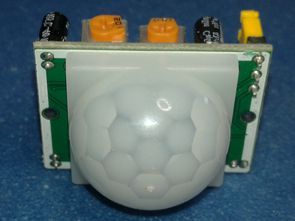Follow along with the video below to see how to install our site as a web app on your home screen.
Note: This feature may not be available in some browsers.
The modules spec says 3m to 7m human detection according to the pot setting (0 to 1M) now if at min sensitivity cats are detected than i face random # of false alarm. As for masking, what with? How to have consistent behaviour of 13 pirs around the house?. Some recommend a thin polyethylene sheet but I'm not sure how to have a consistent result: too small it may float, to large it may bend, hence different atténuation every time, every sensor.High sensitivity is actually good, as you can always partially mask/ shield the sensor.
Yes, one pot sets the detection pw. I set it to min which gives ~3". The other sets tg6e senitivity, as said, with new lense, it's too sensitive even @0 ohmHave to tried to adjust the Two variable pots in the PCB?
Black insulation tape, many more 'professional' PIR's even give examples of where to apply it to restrict the detection angle - it's not a question of sensitivity, it's a question of masking out animals (such as cats) at below human levels.The modules spec says 3m to 7m human detection according to the pot setting (0 to 1M) now if at min sensitivity cats are detected than i face random # of false alarm. As for masking, what with? How to have consistent behaviour of 13 pirs around the house?. Some recommend a thin polyethylene sheet but I'm not sure how to have a consistent result: too small it may float, to large it may bend, hence different atténuation every time, every sensor.
The SR501 is already adjustable, it's the angle of detection that's the issue, not the sensitivity - presumably the new version simply has a better fresnal lens?.Or, you can buy a PIR costing more than 58¢ and with reasonably quality so it can be adjusted.
The op wants to detect a person but not a cat. Seems like a sensitivity adjustment knob would be better than adding a bad "lens." (Attenuator).The SR501 is already adjustable, it's the angle of detection that's the issue, not the sensitivity - presumably the new version simply has a better fresnal lens?.
Presumably you've never used PIR's? - or read the instructions?.The op wants to detect a person but not a cat. Seems like a sensitivity adjustment knob would be better than adding a bad "lens." (Attenuator).
Nigel Goodwin - my PIRs are at ~3m heighr, on the wall and point dwnwards to a window at ~1.5m. Cats are at ~.2m height, man (center if irradiation) at ~1.3m I suppose that reducing the sensitivity is the solution. The old Fresnel worked jusr fine for years. Main difference - they are more 'milky' more opaque
Makes no difference, you're pointing the PIR's in completely the wrong direction, actually trying to detect cats - if they were aligned correctly you would get greater range, and avoid cats. Your issue 'may' be due to improvements in the SR501's, giving increased range.Darling, with the old, more opaque lenses it worked perfectly well for years. Note the the alarm is set only if the total number of excitations per sliding time window exceeds a threshold.

 320volt.com
320volt.com

